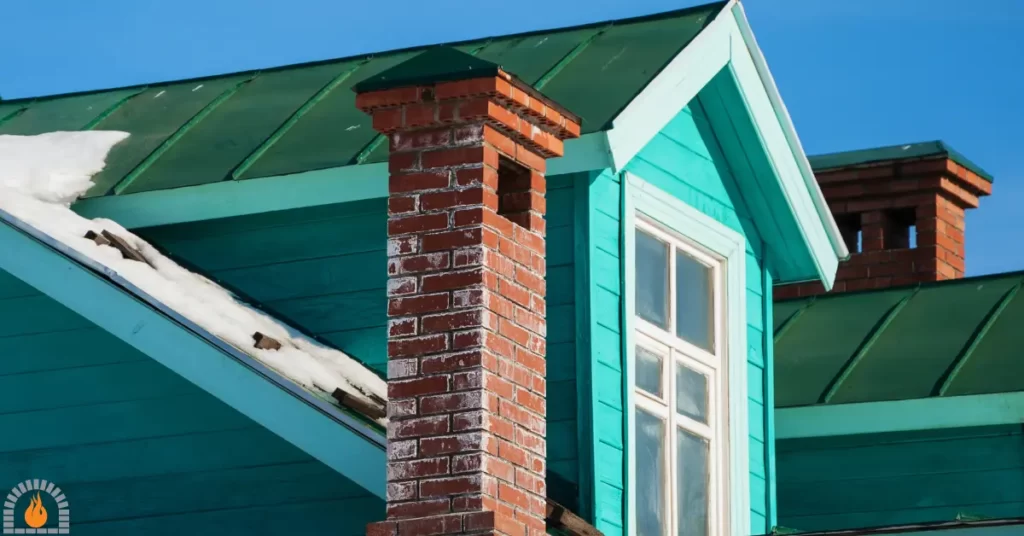In-home architecture, chimneys have long been a staple feature, towering above rooftops and adding character to houses. However, it may strike you as peculiar that many modern homes have chimneys yet lack a fireplace. This intriguing paradox has puzzled homeowners and passersby alike. Why do houses have chimneys but no fireplaces?
Key Takeaways
- Many homeowners appreciate the architectural charm and aesthetic value a chimney adds to their abode.
- Chimneys are crucial in maintaining proper ventilation and air circulation within a house.
- When constructing a house, architects, and builders often consider future possibilities and changing homeowner preferences.
- Modern chimneys are designed with insulation materials that help prevent heat loss during colder months.
Over the centuries, how we heat our homes has radically transformed. In ancient times, fireplaces were essential for warmth, cooking, and light. The evolution of technology and the introduction of central heating systems have rendered traditional fireplaces less necessary.
Consequently, houses have transitioned to alternative heating methods, such as furnaces and electric heaters.
Why Do Houses Have Chimneys but No Fireplaces?
While the primary function of a chimney is to channel smoke and exhaust gases out of the house. Many homeowners appreciate the architectural charm and aesthetic value a chimney adds to their abode.

1) Aesthetic Appeal and Architectural Tradition
While the primary function of a chimney is to channel smoke and exhaust gases out of the house, its visual appeal should not be underestimated.
Many homeowners appreciate the architectural charm and aesthetic value a chimney adds to their abode. Even without a fireplace, chimneys can enhance the overall design and give a sense of grandeur to the structure.
2) Ventilation and Air Circulation
Chimneys are crucial in maintaining proper ventilation and air circulation within a house. They provide an outlet for stale air, cooking odors, and excess moisture to escape, promoting a healthier indoor environment.
Chimneys facilitate the removal of harmful gases produced by appliances like gas stoves, water heaters, and furnaces.
3) Future-Proofing and Flexibility
When constructing a house, architects, and builders often consider future possibilities and changing homeowner preferences.
Including a chimney during construction allows for flexibility if the homeowner decides to install a fireplace or convert to an alternative heating system. It is a preemptive measure, sparing homeowners the need for costly renovations later.
5) Energy Efficiency and Insulation
Believe it or not, chimneys can contribute to energy efficiency and insulation within a home. Modern chimneys are designed with insulation materials that help prevent heat loss during colder months.
Homeowners can reduce energy consumption and save on heating costs by minimizing heat transfer through the chimney structure.
6) Multi-Purpose Chimneys
While fireplaces may be absent in some houses, chimneys can still serve other practical purposes. They can be utilized for exhaust systems of kitchen hoods, clothes dryers, and bathroom fans.
By incorporating these functionalities, homeowners can effectively expel unwanted odors, steam, and moisture from their living spaces.
7) Historic Preservation and Conservation
Sometimes, chimneys without fireplaces can be attributed to historic preservation efforts. Renovations or restorations of older houses often prioritize maintaining the original character and architectural integrity.
Even if a functional fireplace no longer exists, preserving the chimney can be a nod to the building’s historical significance and cultural heritage.
8) Maintenance and Upkeep
Proper chimney maintenance is essential for a house’s safety and structural integrity. Chimneys require periodic inspections and cleaning to remove creosote buildup, debris, or blockages.
By keeping the chimney well-maintained, homeowners ensure its longevity and prevent potential hazards, such as fires or carbon monoxide leaks.
9) Regional and Cultural Influences
Architectural choices, including the presence of chimneys without fireplaces, can be influenced by regional and cultural factors. In certain regions or countries, chimneys are deeply ingrained in architectural heritage and cultural identity.
Even if fireplaces are not commonly used in contemporary homes, the presence of a chimney pays homage to traditional design and local customs.
10) The Allure of Tradition and Nostalgia
Lastly, it’s worth considering the sentimental value of chimneys for many homeowners. Even if a fireplace is not present, the presence of a chimney can evoke a sense of nostalgia and connect individuals to a bygone era.
The image of smoke billowing from a chimney on a chilly winter’s day carries a certain romanticism that resonates with people’s longing for simpler times.
Read More From Our Fireplace Guide:
My Final Thoughts
Why do houses have chimneys but no fireplaces? The coexistence of chimneys without fireplaces in modern houses is a fascinating phenomenon with multifaceted explanations.
From the evolution of home heating methods to the aesthetic appeal and architectural traditions, the presence of chimneys serves various purposes beyond simply housing a fireplace.
Ventilation, future-proofing, energy efficiency, multi-purpose functionality, historic preservation, and cultural influences all contribute to the enigmatic presence of chimneys in the absence of fireplaces.
Affiliate Disclosure: Fireplaceadviser.com is a participant in the Amazon Services LLC Associates Program. We may earn a commission when you click on certain links on this site and purchase.

Hello!! I am Jamal Khan. I often fix my home electric heaters and gas stove problems and research the common issues in the heating units to improve my knowledge and expertise. The aim of establishing fireplaceadviser.com is to share my expertise and knowledge with my audience.












